Recently, a friend went through a prolonged medical treatment. Along with the diet chart and lifestyle changes, there came a list of products safe for use. The do’s and don’ts from the medical team included a suggestion of stainless steel utensils for cooking.
I already own stainless steel appliances because they look good. But when the friend shared these tips, I was curious about stainless steel cookware. I needed to find out why doctors recommend them. What I discovered converted me to a stainless steel aficionado. I also did diligent homework to find out what to use to clean stainless steel.
Advantages of Stainless Steel
Aesthetically, stainless steel is classy and bright. It adds a touch of sleek, modern beauty to any home. There is no denying that its looks are one of the reasons why homemakers choose this finish.
Stainless steel is strong and durable. It can withstand very high and very low temperatures. It will not buckle underweight or in extreme weather conditions.
The most beneficial feature of stainless steel is that it is resistant to corrosion. The addition of other materials like Chrome, Nickel, Molybdenum, etc. makes steel resist rust and damage. Add to this its recyclability, and you have an environment-friendly material.
It doesn’t peel. Unlike many other types of cookware, the topcoat of steel cookware won’t peel off. This makes stainless steel a low maintenance household material. Also, non-peeling makes it safe to cook in.
Whether you want to cook your pasta with tomato sauce or your fish with lime juice, this is the cookware you need. Stainless steel is non-reactive. So, it is safe to cook acidic food. Neither would any material leach into your food, nor would you get a metallic taste.
What’s more, it is easy to sanitize. The slick finish on stainless steel repairs itself after tiny damage. This prohibits any germ or fungal growth on the surface. If you have cleaned the surface of all residue and water, you can rest assured.
These non-peeling, non-reactive properties and easy sanitization are why doctors recommend this cookware. It leaves your food safe to consume.
What are the Disadvantages of Stainless Steel?
Despite its durability, stainless steel tends to discolor easily. In the case of cookware, high heat affects its sheen. Over the years, heat can give your steel cookware a rainbow hue and take away its shine.
Poor heat distribution is a problem if the cookware doesn’t have a bonded conductor. This leads to the sticking of food, particularly proteins. It is okay if you deep-fry, boil, broil or sauté with enough oil. But light sautéing or browning will have your proteins sticking to your utensil.
But the worst nightmare for any homemaker is faded shine on stainless steel with scrub marks all over. And marks on appliances can undo all the décor of your home.
Stainless steel shows dust and dirt very quickly. Even a thin film or a smidgen of dirt will stand out clearly. Though cleaning is not difficult, you must be regular with dusting your appliances.
Another issue for homes with kids is the fingerprints and smudges on steel appliances. Children touch all surfaces. They leave behind dirty marks everywhere. And stainless steel appliances show this clearly.
Now, this makes it necessary to look for the best way to maintain stainless steel cookware and appliances.
Taking Care of Stainless Steel at Home
I love my stainless steel appliances. I take good care of them. There are various steps to keep their glory intact. I will share a few tips on how to keep stainless steel clean.
First remember the things you must not use on your stainless steel appliances, cookware, and other surfaces. They are:
- Steel or metal brushes
- Steel wool
- Chlorine bleach
- Hard water
Hard water tends to leave brown stains on the steel surface. Bleach eats into the topcoat of your appliance. And steel wool and brushes will permanently scar your loved items beyond repair.
Next, take the time to follow the technique. Read the manufacturer’s manual carefully for all do’s and don’ts. If in doubt, call the company to clarify issues.
Look closely to trace the grain of the steel surface. Just like wood, stainless steel also has a particular direction of the grain. Cleaning along the grain is more effective than against it.
Always use a lint-free cloth or soft paper towel to clean. Old terry cloth or T-shirts are a great hack. For tough grime, use old soft toothbrushes or nylon scrubs.
Your cleaning is going to be a two-step process.
The first step would be cleaning the dirt off. The second step would be buffing and shining the surface. Let us look at the two steps separately.
Cleaning Your Steel Surfaces
Here are some readily available products that can help keep any stainless steel surfaces clean.
Dishwashing detergent
This is the basic and the best option for you. It clears grime smoothly. Just make sure you use a soft wet cloth and a small amount of dishwashing liquid to start with.
Rub and wipe along the grain. For stubborn spots, go over the area a few times.
Dry any water streaks with a clean towel. Polish.
Vinegar and water
This is a great natural ingredient to clean greasy stainless steel surfaces.
Mix equal quantities of vinegar and water. Put in a spray bottle. Spray on the surface and wipe clean.
Repeat and rub softly, if needed. Use a soft cloth towel to clean. Polish or buff.
If you have hard water supply in your tap, mix distilled water with vinegar. For tough sticky grime, use undiluted vinegar. This is also the best way to get a stainless steel gas stove top clean and shiny.
Baking soda
You must be using this item beyond your cakes and bakes. It is very handy in pulling out sheets of old grime. It is a great homemade stainless steel cleaner.
Make a paste with baking soda and water. Apply generously on the troublesome marks. Let sit.
After 15 to 20 minutes, scrub the area with an old toothbrush or nylon scrubber. Wipe off with a lint-free cloth: repeat and polish.
Club soda spray
Another quick method is to pour club soda into a clean spray bottle. Spray on the steel surface. Wipe along the grain with a clean, soft cloth. Polish afterward.
This is a smart idea to clean your stainless steel water bottle. After cleaning on the outside, pour club soda inside the bottle. Shake and leave for a few minutes. Pour out the liquid. Wipe clean.
Lemon juice
Here is a mild and safe acid to cut grime. Rub a slice of lemon on those dirty smudges.
Wipe with a damp, soft cloth. Dry with another towel. This will leave the surface smelling fresh too.
Rubbing alcohol
This all-purpose item comes handy every time you want to cut tough stains and spots. To remove stains from your appliances, dab rubbing alcohol on the affected area. Rub gently. Repeat, if needed.
Remember, alcohol is inflammable. Never use in ovens, on stoves or other heat-conducting appliances.
To remove chemical stains from stainless steel appliances baking soda paste and vinegar are the two best options.
Polishing Your Steel Surfaces
This is the next step of your stainless steel care. My advice will be to use homemade stainless steel polish over any chemicals. This keeps your family safe and gives the best results. Pick natural oils to polish your steel.
Olive oil
Dip a clean cloth in olive oil and rub with the grain. Make sure you dab just a little oil and rub more. Too much oil can spoil the shine. It will also attract a lot of dust.
Lemon oil
Here is an answer to a homemaker’s prayers. Rub a few drops of lemon oil with a clean lint-free cloth along the grain. Apply slight pressure as you do so. This will add shine to your steel surface. It will give a citrusy freshness to the house as well.
Mineral oil/ Baby oil
Shine your steel appliances with mineral oil. Baby oil often contains mineral oil. Just make sure that the surface would not come in direct contact with food. You don’t want your family to ingest mineral oil.
Unusual Options to Clean Stainless Steel
There are other methods to clean steel surfaces too. Let us have a look at some ideas to get stainless steel shiny and squeaky clean.
Using flour
Remove dirt and grease from your stainless steel sinks. Let dry. Cover the surface with dry flour. Take a soft cloth and buff in a circular motion. Wipe away the flour from the shiny sink.
Cleaners and Polishes
There are many oil-based cleaners to take off the oil smudges and fingerprint oil. A water-based cleaner is less effective but more environment-friendly.
Grocery stores keep steel polishes. You may get tempted to use waxy polishes. But over time they dull the surface. Choose non-waxy polish for the best results.
Feldspar containing cleaners
These are not commonly used. But you may try these to shine your appliances. Rub with flour sack material cut into pieces. Use wax paper to polish.
Commercial cleaners
There are specific stainless steel cleaners that can cover scratches on your steel surfaces. Read the instructions before using. Remember to rinse and wipe dry.
Glass cleaner
Glass cleaners can do the trick sometimes. Just remember to wipe all residue with a clean towel.
Polish paper
Scratches on brushed steel surfaces cannot be completely removed. But, you may restore the look to some extent.
Use a polish oil or any thick oil. Spray on the surface and clean with a lint-free cloth.
Spray more oil on the scratches and rub with an abrasive kitchen scrub along the grain. This will even out the scratches. Wipe with a clean dry towel. This is the best method for cleaning brushed stainless steel.
Water displacer
These are usually used for machinery and car engines. But they work wonders on household steel appliances. You may not want to use this in your kitchen, though.
Armed with so many options, there is not a chance of dull steel in your home. A little hard work at the right time will give you a sparkling home.
Read here:


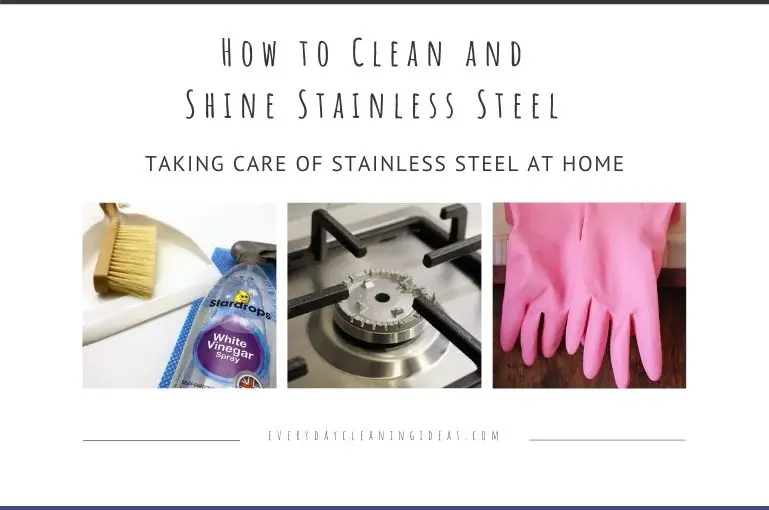

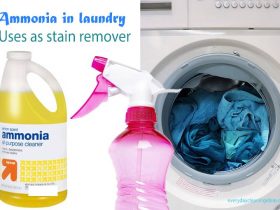
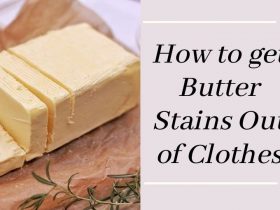

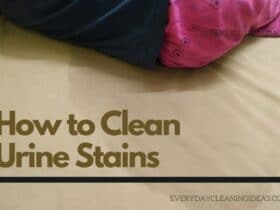
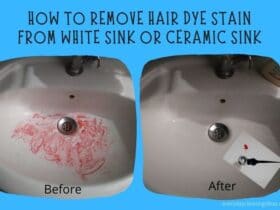
Leave a Reply
View Comments